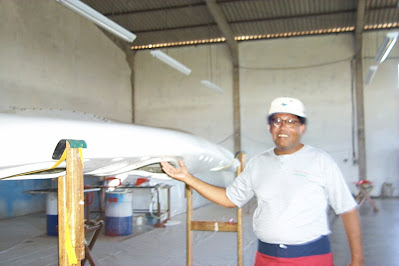When we Brazilians learn English we spend a lot of time wondering why the language of Shakespear is not written as it is pronounced or pronounced as it is written. In the process of these speculations, we offer Portuguese (mainly Brazilian Portuguese) as a perfect example of an orderly language that when being read whats is written is pronounced. But is it true? Let's take a look!
Things Brazilian
With reverent and in depth peaceful incursions into Paraguay and Guyana. An extension to other neighboring countries may come soon. Photo by the staff of Rio Olympic Games 2016 Iguassu / Iguazú Falls
June 28, 2022
Portuguese is written the way it is pronounced! Is it true? Not quite
August 14, 2020
Portuguese Pronunciation - Lesson I Quick lessons by Jackson Lima
August 13, 2020
Brazilian Portuguese sounds made easy: how to properly say São Paulo?
The list of words below covers the sounds of: ã, ão, õ, ões
March 01, 2020
Brazilian Birds by Biomes: Great Posters welcome you to the Brazilian Bird Fauna
 |
| Birds of the Caatinga Poster |
February 23, 2020
Quick Bird's eye view of Brazil's Geography or Selling Brazil made easy for Travel Agents
 |
| Before there ever existed the country of Brazil or any other country, there was the land. Map I |
February 14, 2020
Brazil's religious synchretism: Our Lady of Seafearers and Yemanja
 |
| Offerings at the juction of the Iguassu (Iguazú) and Paraná Rivers |
On February 2, every year, millions in Brazil go to rivers, seashores and beaches along the Brazilian coast to participate in ceremonies to honor Yemanja, the Mother of the Sea. Most of Yemanja devotees identify themselves with Candomble and Umbanda, both known as Afrobrazilian religions. But there are more forms and schools of Afrobrazilian religions some of them with a lot more Native Indian elements than African but somehow keeping allegiance to the Orishas
Candomble is as faithfull to the African traditon as possible. All hymns and songs are in the Yoruba language. Deities are called Orishas. Yemanja, is an Orisha that takes care of the seas, rivers waters and its creatures.
 | |
| Two Yemanja statues: African Candomblé and Umbanda Brazilian versions. Two models represent the two Yemonjas - the African version with covered face |
Umbanda is as Brazilian as it can be. Besides the Orishas shared with Candomble, Umbanda spirituality has hundreds of entities who are associated on Earth with different human ethnicities, countries, walks of life, professions, experiences and groups. Easteners, Amerindians, Brazilian Indians, Gypsies, cowboys and cowherders, old slaves both men and women and people who during their Earth lifetime were not so nice people like prostitutes, killers, con artists and gangleaders.
On Mother Yemanja Day millions of Candomble, Umbanda and friendly Catholics take to the beach of places like Salvador, Rio de Janeiro and even to Foz do Iguaçu over 700 kilometers from the next seashore sitting comfortably on the place where where the Iguassu River meets the Paraná on ther way to the sea, way far to the South.
 |
| The Candomble African Yemonja, left. The Brazilian Umbanda version right |
But the number of people going to beaches, rivers and river deltas is multiplied hundreds of time if you add to the list millions of Roman Catholics who organize river processions this time to honor, thank and worship Our Lady of Seafarers or Our Lady of Navigators.
Thanks to synchretism, the name given to the merging of two or more systems of belief, Our Lady of Seafarers has been kind of translated as Yemanja by catholic priests. That has also happened throughout the Christan world in relation to festivities like Christmas or Carnival which have roots in pagan festivities and were adpated to fit Chrstian concepts.
In Foz do Iguaçu, the city that houses Iguassu Falls, the Iguassu River saw both celebrations. Local Umbanda and Candomblé organizations with the support of the City's Human Rights and Community Relations Department organized the Yemanja Day Celebration. The festivity includes meeting up at the Praça da Paz (Peace Square) around 7h am, car procession to the river bank at 8 a.m. and boarding the Kattamaram II riverboat around 9 a.m. for a one-hour navegation with plenty of singing, drumming and dancing as far as the place where devotees deliver their offerings and presents to Yemanja.
Since February 2 is also the Day of Our Lady of Navigators which also include the use of the Katamaram II, the Afrobrazilian movements decided to anticipate celebrations for Feberury 1, so that Catholics could use the boat on February 2 when a far bigger processons followed by mass and lunch occurs. The boat worked on a careful schedule since it also serves the tourist community with navigation up and down the river in the afternoon.
The Roman Catholic Apostolic Procession in honour to Our Lady of Navigators was organized and led by the Parish of Our Lady Aparecida and the Holy Spirit.
Included in the program of the African Brazilan celebration was a mass to be officiated by priests of the Brazilian Catholic Apostolic, a church not recognized by the Vatican that happens to have a Parrish called Our Lady of Navigators in the Iguassu Falls Area. The mass took place on Peace Square after the procession and later in the afternoon the official mass of the Brazilian Catholic Church had the participation of umbanda and candomblé believers.








